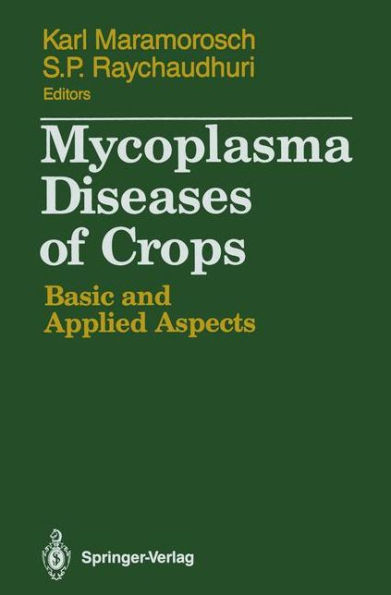Home
Mycoplasma Diseases of Crops: Basic and Applied Aspects
Barnes and Noble
Loading Inventory...
Mycoplasma Diseases of Crops: Basic and Applied Aspects
Current price: $109.99

Barnes and Noble
Mycoplasma Diseases of Crops: Basic and Applied Aspects
Current price: $109.99
Loading Inventory...
Size: OS
*Product information may vary - to confirm product availability, pricing, shipping and return information please contact Barnes and Noble
Mycoplasmas are placed in a separate class, Mollicutes, which removes them from bacteria. Their main characteristics are lack of a cellular wall and inability to synthesize the peptidoglycan polymer. The lack of a cell wall accounts for the pleomorphism, osmotic sensitivity, sensitivity to antibiotics that inhibit pep- tidoglycan polymerization and synthesis, susceptibility to lysis by alcohol and detergents, and the ability to grow on agar gel. At present, three families are placed in the class Mollicutes: Mycotaceae, Acholetaceae, and Spiroplasmataceae. The first pathogenic mycoplasmas were discovered in Pasteur's laboratory nearly 90 years ago as the causative agents of a sheep disease. They were first named PPLO, pleuropneumonia-like organisms. In 1928, Nocard in France coined the name mycoplasma for PPLO, but his publication and the new name remained practically unnoticed until Leonard Hayflick and Robert Channock succeeded in culturing the "PPLO" of human "atypical virus pneumonia" in the United States in 1960. Hayflick resurrected the name given by Nocard and since then, the causative agent of human "atypical virus pneumonia" is known as Mycoplasma pneumoniae. Other mycoplasmas cause diseases in dogs, sheep, birds, cattle, pigs, etc.
Mycoplasmas are placed in a separate class, Mollicutes, which removes them from bacteria. Their main characteristics are lack of a cellular wall and inability to synthesize the peptidoglycan polymer. The lack of a cell wall accounts for the pleomorphism, osmotic sensitivity, sensitivity to antibiotics that inhibit pep- tidoglycan polymerization and synthesis, susceptibility to lysis by alcohol and detergents, and the ability to grow on agar gel. At present, three families are placed in the class Mollicutes: Mycotaceae, Acholetaceae, and Spiroplasmataceae. The first pathogenic mycoplasmas were discovered in Pasteur's laboratory nearly 90 years ago as the causative agents of a sheep disease. They were first named PPLO, pleuropneumonia-like organisms. In 1928, Nocard in France coined the name mycoplasma for PPLO, but his publication and the new name remained practically unnoticed until Leonard Hayflick and Robert Channock succeeded in culturing the "PPLO" of human "atypical virus pneumonia" in the United States in 1960. Hayflick resurrected the name given by Nocard and since then, the causative agent of human "atypical virus pneumonia" is known as Mycoplasma pneumoniae. Other mycoplasmas cause diseases in dogs, sheep, birds, cattle, pigs, etc.

















